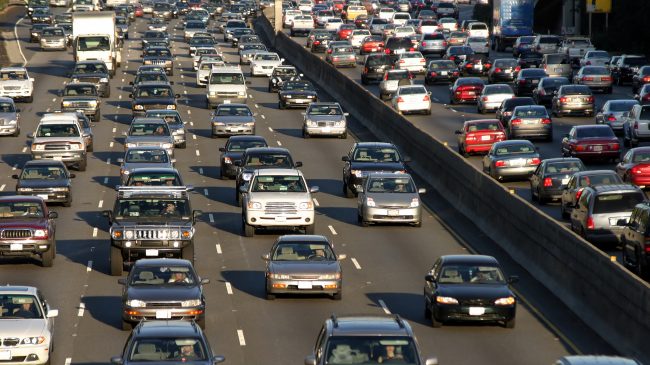America’s interstate highways are aging and inadequate — and need to be replaced. That’s the conclusion of a major study, requested by Congress, and released last December by the well-respected Transportation Research Board. This expert study estimated that if rebuilding projects were carried out conventionally, it would cost Americans $57 billion per year for the next two decades. Even worse news: At that slow pace of reconstruction, by 2040 pavement conditions and traffic congestion would actually be worse than they are today.
For context, federal gas taxes would have to go up by 360 percent to raise that $57 billion per year. That is not going to happen. Thankfully, there is a better, faster alternative, particularly for California. Issuing long-term revenue bonds backed solely by toll revenues would generate the money for interstate reconstruction projects in major cities like Los Angeles to get underway now.
Here are three examples of how this approach could benefit Southern Californians. Rebuilding and widening I-5 between Los Angeles and Sacramento with dedicated truck lanes — separated from car lanes by concrete barriers — would improve traffic conditions and travel times for commuters and truckers. To relieve congestion and help move goods on the Long Beach (710) Freeway, dedicated truck lanes could be added to that corridor as well. The construction and completion of large-scale networks of express toll lanes across the entire region that is served by the Southern California Association of Governments, including Imperial, Los Angeles, Orange, Riverside, San Bernardino and Ventura counties, would provide the money for key projects that are in the region’s long-term plan but currently lack funding.
California is well-placed to implement a toll financing approach to interstates. It already has the statewide FasTrak electronic tolling system, which eliminates the need for old-fashioned cash tolling. California was first in the nation to implement express toll lanes (on SR 91 in 1995), and the nation has followed its example. There are 42 such toll projects in operation nationwide today, including about a dozen in California.
But now drivers are probably thinking: How could I afford to pay tolls on top of gas taxes? What would prevent these tolled interstates from becoming cash cows for politicians? And aren’t tolls illegal on interstate highways?
Those are legitimate concerns, in part because politicians have often turned legacy toll roads back east into cash cows that divert money to non-highway projects. A new Reason Foundation study suggests a better deal for 21st-century interstates, aimed at making this a genuine value proposition for motorists and truckers alike. It goes like this:
Congress would create a voluntary program under which it would remove the 1956 ban on interstate tolling for any state that wants to use toll finance to rebuild its aging interstates. But, to preserve the interstates as a national system, and to make the new ones customer-friendly, states would have to agree to a set of conditions, such as these: Tolling must be all-electronic so that it is low-cost and convenient for drivers; all vehicles, including electric vehicles and carpools, using the toll lanes must pay tolls since they would all benefit from the improved interstates; states must rebate fuel taxes for all miles driven on the rebuilt, tolled interstates so that there is no double-taxation; tolls on a section of interstate would not be collected until the corridor was completely rebuilt so that drivers only pay once they are getting full value for the tolls; and toll revenues could be used only for the construction and ongoing operating and maintenance costs of the rebuilt interstates.
A growing number of states are already seriously studying toll financing. Furthest along are Connecticut and Rhode Island, but Indiana and Wisconsin are examining the toll-financed reconstruction of all their interstates. Alabama and Louisiana are studying toll financing for interstate bridge replacement, and Illinois and Virginia are looking into using it to rebuild specific aging interstates.
In California, the status quo is not an option. Interstates are a vital part of the state’s economy. Congress must pass a new highway bill in 2020 and California should push for the ability to use toll-financing to rebuild and modernize its interstates.
This column first appeared in the Orange County Register.

